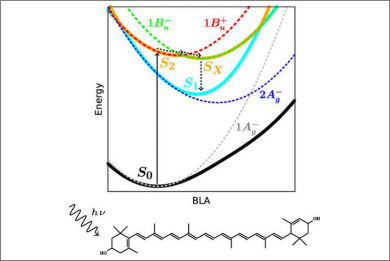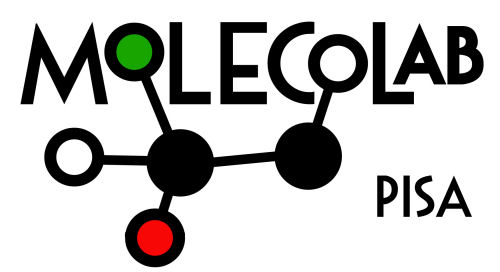
Carotenoids are natural pigments with multiple roles in photosynthesis. They act as accessory pigments by absorbing light where chlorophyll absorption is low, and they quench the excitation energy of neighboring chlorophylls under high-light conditions. The function of carotenoids depends on their polyene-like structure, which controls their excited-state properties. After light absorption to their bright S2 state, carotenoids rapidly decay to the optically dark S1 state. However, ultrafast spectroscopy experiments have shown the signatures of another dark state, termed SX. Here we shed light on the ultrafast photophysics of lutein, a xanthophyll carotenoid, by explicitly simulating its nonadiabatic excited-state dynamics in solution. Our simulations confirm the involvement of SX in the relaxation toward S1 and reveal that it is formed through a change in the nature of the S2 state driven by the decrease in the bond length alternation coordinate of the carotenoid conjugated chain.
Accomasso, D.; Arslancan, S.; Cupellini, L.; Granucci, G. & Mennucci, B.
J. Phys. Chem. Lett. 13,6762-6769 (2022) https://doi.org/10.1021/acs.jpclett.2c01555

